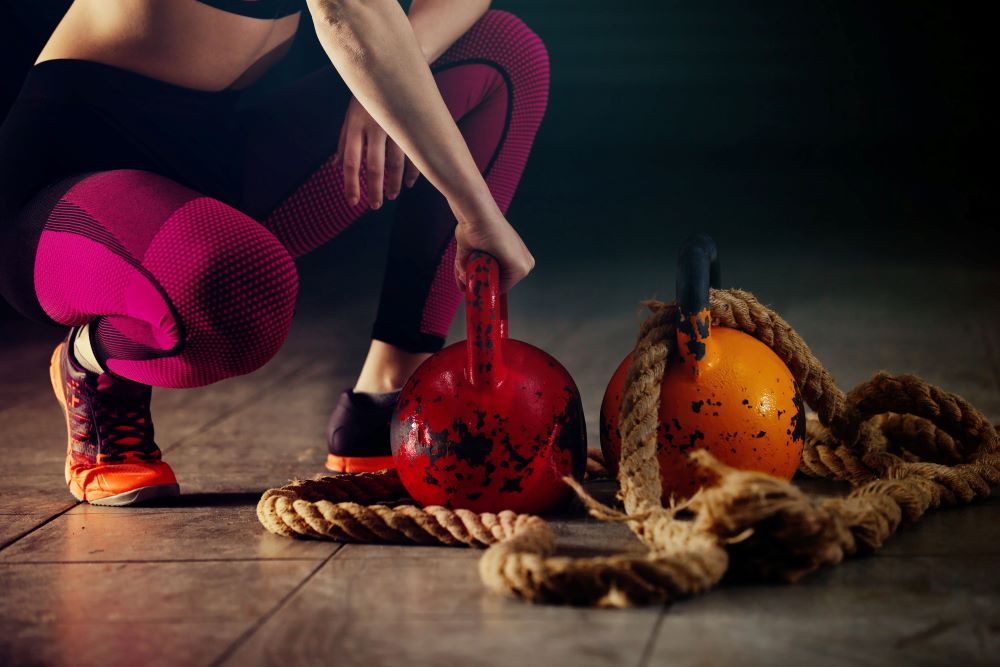In the hustle and bustle of modern life, finding time to lace up your running shoes and hit the pavement can be challenging. However, the beauty of running is that it doesn’t require a complex setup or expensive equipment to get started. Learning how to train running at home can open doors to a world of fitness possibilities right within your living room or backyard. Whether you’re a seasoned marathoner looking to maintain your form or a beginner just starting your fitness journey, home running training is both flexible and rewarding.
Home running training offers the convenience of setting your own pace and schedule. It’s about making fitness a seamless part of your lifestyle, fitting into your routine as comfortably as your favorite pair of running shoes. By incorporating innovative techniques and tailored workouts, you can transform your home into a hub of fitness activity. From treadmill sessions to interval training and strength exercises, the options are endless and can be adapted to meet your individual goals.
Ready to take the first step towards a healthier, more active lifestyle? Visit our website to learn more and get started today! Explore the tools and resources we offer to make your home running experience both effective and enjoyable by clicking here.
Setting Up a Home Running Space
Creating a dedicated space for running at home is a crucial step in establishing a successful training routine. A well-structured environment not only enhances your motivation but also ensures safety and continuity in your workouts. When setting up your home running space, consider a few key factors that will influence your training efficiency.
Firstly, choose a location that offers ample space and ventilation. Whether it’s a corner of your living room or a garage, make sure there’s enough room for your equipment and movement. A treadmill is a popular choice for indoor running, but if space is a constraint, consider alternatives like a jump rope or resistance bands to complement your routine.
Next, invest in quality equipment. A reliable treadmill can be a game-changer, offering features like adjustable inclines and pre-set workouts. If purchasing a treadmill isn’t feasible, focus on creating a space with good flooring, like rubber mats, to provide cushioning and reduce impact on your joints.
Additionally, ensure that your space is well-lit and free from clutter to prevent accidents. A motivational atmosphere can also boost your spirits, so consider adding a few motivational posters or a mirror to track your form during workouts. Personalizing your space makes it more inviting and encourages consistency in your training regimen.
By thoughtfully setting up your home running space, you create a foundation for a disciplined and enjoyable fitness journey, helping you stay committed to your goals without the need for a gym membership.
Essential Gear for Home Runners

Equipping yourself with the right gear is essential for maximizing your home running experience. While you may be running indoors, the right attire and accessories contribute significantly to comfort, performance, and injury prevention.
Start with a pair of **high-quality running shoes**. The correct footwear provides the necessary support and cushioning to protect your feet and joints from the impact of running. When selecting shoes, consider your foot type – whether it is neutral, flat, or high-arched – and choose shoes that fit well and feel comfortable.
Next, invest in **moisture-wicking clothing**. Running indoors can still make you sweat, so selecting lightweight, breathable attire is crucial. Fabrics such as polyester or nylon are excellent choices as they draw sweat away from your skin, keeping you dry and comfortable during your runs.
Don’t forget about **supportive accessories** like a sports bra for women, which offers essential support and reduces discomfort. For those running on treadmills, a towel and a water bottle within reach are indispensable for staying hydrated and wiping off sweat.
Additionally, **fitness trackers** or smartwatches can be valuable tools for monitoring your progress. These devices track metrics like heart rate, pace, and distance, providing insights that help you adjust your training for better results.
Lastly, consider adding a **foam roller or massage stick** to your gear. These tools are excellent for post-run recovery, helping alleviate muscle tension and improve flexibility.
Investing in the right gear not only enhances your running experience but also encourages consistency and dedication to your fitness goals from the comfort of your home.
Creating a Home Running Routine

Designing a structured home running routine is instrumental in achieving your fitness goals while enjoying the flexibility and comfort of your own space. Crafting a tailored plan ensures consistency, progression, and, most importantly, enjoyment in your running journey.
Begin by setting clear and realistic **goals**. Whether you aim to improve your endurance, speed, or simply maintain a healthy lifestyle, having a defined objective helps shape your routine and keeps you motivated. **Write down your goals** and revisit them regularly to track your progress.
Next, establish a **schedule** that aligns with your lifestyle. Consistency is key in running, so choose specific days and times that you can commit to each week. This could mean running a few days a week in the morning to kickstart your day or in the evening to unwind.
Incorporate a variety of **training techniques** to keep your routine engaging and effective. Mix up your runs with intervals, tempo runs, and long runs to work on different aspects of your fitness. For example, interval training can enhance your speed and endurance, while long runs build stamina.
**Warm-ups and cool-downs** are crucial components of any running routine. Start each session with a dynamic warm-up to prepare your muscles and reduce injury risk. After your run, dedicate time to cool down with stretching exercises, focusing on major muscle groups employed during running.
Lastly, remember to **listen to your body**. Adjust your routine as necessary, allowing for rest days or lighter workouts if you feel fatigued or are recovering from an injury. Balance is essential for sustainable progress and a positive running experience.
By establishing a well-rounded home running routine, you not only enhance your physical fitness but also cultivate a sense of discipline and achievement.
Incorporating Strength and Flexibility

Integrating **strength and flexibility exercises** into your home running routine is crucial for enhancing performance and reducing the risk of injury. While running primarily targets cardiovascular fitness, a well-rounded regimen that includes these components builds a more resilient and capable body.
**Strength training** is essential for runners as it fortifies muscles, improves endurance, and enhances running form. Focus on exercises that target key muscle groups such as the core, legs, and glutes. Incorporate exercises like squats, lunges, and calf raises, which are particularly effective for runners. Additionally, core exercises like planks and Russian twists help maintain stability and balance, which are vital for efficient running.
**Flexibility training** complements strength work by promoting a greater range of motion and preventing tightness that can lead to injuries. Incorporate dynamic stretching routines before your runs to prepare your muscles and static stretching post-run to aid recovery and maintain flexibility. Key stretches for runners include the hamstring stretch, quadriceps stretch, and hip flexor stretch.
To seamlessly incorporate these exercises, designate specific days for strength and flexibility training within your weekly plan. This not only prevents overtraining but also provides a varied workout regime that keeps you engaged.
Furthermore, consider including **yoga or Pilates** sessions into your routine. These practices are excellent for enhancing flexibility and core strength, offering a holistic approach to physical fitness that complements running.
By dedicating time to strength and flexibility, you create a balanced program that supports your running ambitions and promotes overall well-being. This integrative approach ensures that you are not only running stronger but also smarter.
Tracking Progress and Staying Motivated

Tracking your progress and maintaining motivation are key components of a successful home running training program. By monitoring your achievements and setting future goals, you can ensure that each step you take is purposeful and rewarding.
Begin by keeping a **running log**. This can be a traditional journal, a spreadsheet, or a digital app specifically designed for runners. Record essential details such as distance, time, pace, and how you felt during each run. Over time, this log will provide valuable insights into your progress and help identify areas for improvement.
**Setting achievable goals** is another effective strategy to stay motivated. Your goals should be specific, measurable, attainable, relevant, and time-bound (SMART). Whether it’s increasing your weekly mileage, improving your pace, or preparing for a virtual race, having clear targets keeps you focused and driven.
Another way to stay motivated is by **celebrating small milestones**. Each new personal best or completed training week is a victory that deserves recognition. Reward yourself with something enjoyable, like a new running playlist or a favorite meal.
Additionally, consider joining online running communities. These platforms allow you to connect with fellow runners, share experiences, and gain encouragement. Engaging with a community can provide a sense of accountability and make the training process more enjoyable.
Finally, remember that motivation can fluctuate. On days when enthusiasm wanes, remind yourself of the reasons you started running. Visualize your goals and the satisfaction that comes with reaching them.
Embrace the journey with us and explore more ways to enhance your running experience. Visit our website to learn more and get started today! Keep leaping towards fitness freedom, one step at a time.


